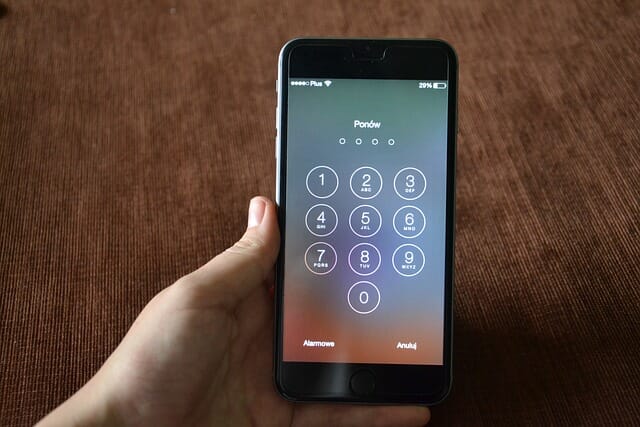
Identifying Local vs International Calls: What You Need to Know
In today's interconnected world, knowing whether a call is local or international can make all the difference. With the rapid growth of technology and telecommunications, it has never been more important to understand how to identify a phone number, especially when you’re dealing with potential scams or lost connections. This article will delve deep into the nuances of identifying local versus international calls, equipping you with the necessary knowledge and tools to navigate this landscape effectively.
Understanding Call Types: Local vs International
What Constitutes a Local Call?
A local call typically refers to a call made within the same area code or geographical region. It usually does not accrue long-distance charges and is often the most straightforward type of communication. Understanding how to identify local calls can save you both time and money.
Defining International Calls
Conversely, an international call involves dialing a phone number that is outside your country’s borders. These calls often come with higher charges and may vary significantly depending on your telecommunications provider.
Why Is It Important to Know?
Understanding whether you're receiving a local or international call can help in numerous ways:
- Avoiding Unwanted Charges: Prevent incurring unnecessary costs.
- Caller ID Accuracy: Helps in verifying who is calling.
- Security Measures: Identifying potential telemarketing or scam calls.
The Anatomy of Phone Numbers
Components of Phone Numbers
Every phone number consists of several parts:
How Area Codes Work
Area codes are essential for distinguishing between different regions within a country. For example, if you see an area code starting with '212,' it's likely from New York City—a clear indicator that you're dealing with a local call if you're also located in that region.
Tools for Identifying Calls
Using Caller ID Features
Most phones come equipped with caller ID features that display the incoming number along with its associated location when available. This can be an invaluable tool in identifying whether you’re receiving a local versus an international call.
Phone Number Checker: A Handy Resource
A phone number checker can validate information about any phone number by providing details such as its origin, carrier, and type (landline or mobile). This tool allows users to verify numbers before answering unknown calls.
Table 1: Popular Phone Number Checkers
| Tool Name | Features | |------------------|---------------------------------------------------| | Truecaller | Caller ID & spam detection | | NumVerify | API for phone validation | | Whitepages | Extensive database for searching numbers |
The Importance of Phone Number Validation
What Is Phone Number Validation?
Phone number validation is the process of verifying whether a given phone number is legitimate and active. This process helps users avoid scams and protect their privacy.
Benefits of Validating Phone Numbers
- Reduces spam calls
- Ensures successful communication
- Enhances overall security
Phone Verification Techniques
Why Phone Verification Matters
In our digital age, phone verification serves as an essential step for businesses Phone carrier lookup and individuals alike. It ensures that both parties are who they claim to be—especially crucial when it comes to financial transactions or sensitive information exchanges.
Methods for Effective Phone Verification
Identifying Local vs International Calls: What You Need to Know About Cost Implications
Cost Structures of Local Calls
Local calls generally do not incur additional costs beyond your plan's monthly fee; however, some providers may have specific conditions regarding unlimited plans.
International Call Costs Explained
International calling rates can vary widely based on your telecom provider's policies and your calling plan. While some providers offer flat rates, others may charge per minute which can add up quickly.
Table 2: Example Rate Comparison
| Provider | Local Call Rate | International Call Rate | |-----------------|-------------------|------------------------------| | Provider A | $0 | $0.10 per minute | | Provider B | $0 | $0.05 per minute |
Recognizing Potential Scams Through Caller ID
Common Scams Associated with Unknown Numbers
Scammers often use unfamiliar numbers to reach potential victims, making it crucial to recognize these red flags:
- Unfamiliar area codes
- Urgent requests for personal information
- Generic greetings instead of using names
How Caller ID Can Protect You
By utilizing caller ID features alongside phone verification tools, you can reduce your chances of falling victim to scams significantly.
FAQs About Identifying Local vs International Calls
Q1: How can I identify if a call is local or international?
A1: You can identify by checking the country code and area code associated with the incoming call through caller ID or using phone validation services.
Q2: What should I do if I receive an unknown international call?
A2: It's best not to answer immediately; check online resources first via phone number checkers before deciding how to proceed.
Q3: Are there apps that help identify spam calls?
A3: Yes! Apps like Truecaller and Hiya are popular choices for identifying spam callers and providing caller information based on community feedback.
Q4: Why do scammers use spoofed numbers?
A4: Reverse caller ID Scammers often spoof numbers to appear as if they are calling from familiar locations or legitimate organizations, increasing their chances of getting answered.
Q5: Can I block unwanted international calls?
A5: Most smartphones allow users to block specific numbers directly through settings; additionally, many telecom services provide options for blocking suspected spam numbers.
Q6: How does my telecom provider determine long-distance charges?
A6: Telecom providers use geographical distance Reverse lookup tools along with specific agreements with other networks globally to classify charges related to long-distance calls.
Conclusion
Navigating through local versus international calls doesn't have to be complicated if you arm yourself with knowledge about how phone numbers work—where they originate from—and how modern tools like caller ID, phone checkers, and validation techniques can simplify this process immensely. By understanding these concepts laid out in "Identifying Local vs International Calls: What You Need to Know," you will be better prepared against unwanted charges and potential scams while ensuring effective communication across distances—whether they're just around the corner or halfway across the globe!
With this newfound expertise at your fingertips, you'll not only save on costs but also enhance your security in today's fast-paced telecommunication landscape! So next time your phone rings from an unknown number—take a moment; don’t just answer—validate!
